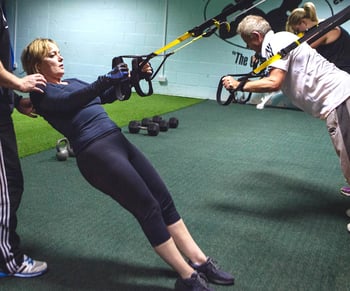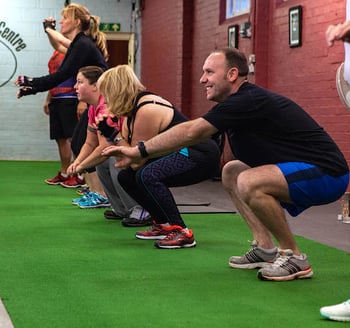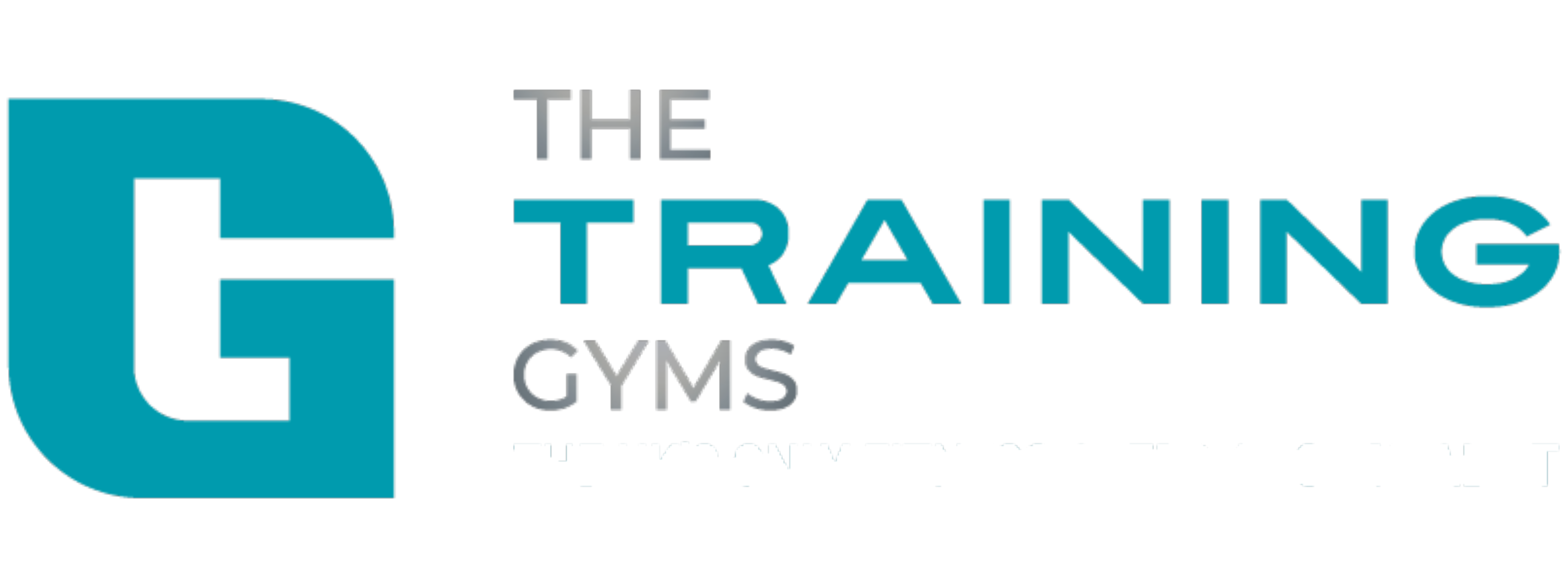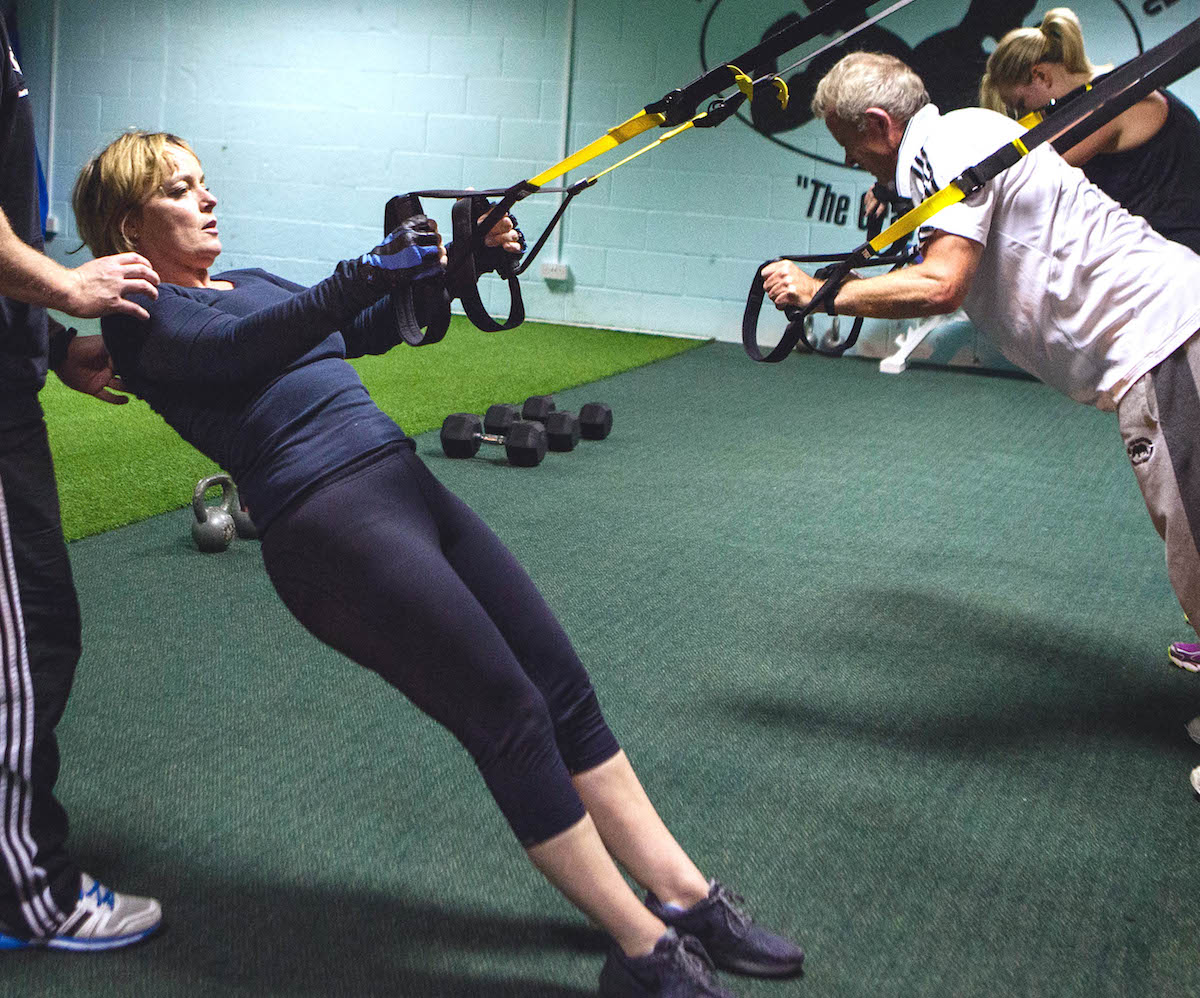 Christina: This is Christina with the DVCC and today I’m joined with Sam, trainer at the DVCC’s Bedford location. We’re going to discuss today strength training. Sam, can you tell us a bit about strength training, what exactly is it?
Christina: This is Christina with the DVCC and today I’m joined with Sam, trainer at the DVCC’s Bedford location. We’re going to discuss today strength training. Sam, can you tell us a bit about strength training, what exactly is it?
Sam: Basically, strength training is exercising with the goal of increasing the physical strength. And with that, there are two kinds of strength.
We have relative strength, which gymnasts or rock climbers use, but not at the expense of increasing their body weight to make their sport any harder. Relative strength is basically building maximum strength while controlling their calorie intake or adding cardio so you don’t increase body weight.
Secondly, there’s absolute strength which is what I’ll be discussing mainly today, which strongman or Olympic lifters use. This is more body weights, which means bigger muscles and more strength. Absolute strength is about becoming a stronger person with the most increased mass.
Christina: So you don’t necessarily need to be a big bulky person to have strength?
Sam: That’s correct, yes.
Christina: If anyone does some research on strength training, they will come across something called the Big Four. Can you tell us what that is and a bit more about that?
Sam: Sure: the Big Four is basically the main lifts which are used frequently in strength training. That is the squat, the dead lift, the bench press and the shoulder press. These are strength training exercises that give you the most return on your investment, or biggest bang for your buck for instance. Basically, if you work hard on these lifts, you’ll see the best results.
In addition, these four compound exercises are multi joint nature and therefore they’ll go through a full range of motion when performed and they recruit a huge amount of fast twitch muscle fibres, and when performed with the correct form, your mechanics through the whole range of motion will be seamless. Then you can add on more weights to the bar and it will then translate to increase in strength gains.
Christina: Is there a sequence for the Big Four, or can you mix up?
Sam: You can mix it up, yes; you can certainly do those exercises in any order. A typical routine would use all four, spread out throughout the week, on different days.
Christina: So going on then, in a typical workout you wouldn’t do the same workout each time you do strength training?
Sam: No, you would vary it up. A very common training exercise would be a five by five routine, where you would perform five sets of five reps; so when dealing with strength training, typically you’ll go for the heavier weights, lower rep ranges with longer rest periods in between the sets, so you’re looking for quality over quantity in the rep range.
So a typical routine could be a three day workout: Monday, Wednesday and Friday - on non consecutive days. You could have on the Monday a squat, a bench press and a rowing exercise; on Wednesday you have a squat again, a shoulder press and a dead lift; and then on the Friday you could have a squat, a bench and a row again. So it’s quite a high volume, you’ve got three squat days in there and then mixing up the benching and the rowing as well.
Christina: You mentioned with a heavier weight but less repetitions. Is that something key to building strength?
Sam: Yes. Basically, when you’re lifting heavier weights, that will be more aimed for strength training. Typically, when you’re looking at building muscle or endurance, you’re looking at the higher end rep ranges, anywhere from six to fifteen reps. But yes, we’re going for quality over quantity on the reps here, so heavy weights, low reps, long rest periods.
Christina: Perfect. And what about nutrition? People that are looking to build strength, do they need to follow a certain nutrition plan?
 Sam: If you’re looking for pure strength, if you’re quite a small person, then a slight calorie surplus would be advised. High protein, healthy proteins like lean chicken, grass fed beef, fish is good, salmon, tuna, obviously healthy fats and carbs as well; and healthy fats could be a mixture of avocadoes, nuts, eggs and various seeds. And then healthy carbs would be things like sweet potatoes, brown rice, different ones like brown pasta, quinoa and bulgar wheat as well.
Sam: If you’re looking for pure strength, if you’re quite a small person, then a slight calorie surplus would be advised. High protein, healthy proteins like lean chicken, grass fed beef, fish is good, salmon, tuna, obviously healthy fats and carbs as well; and healthy fats could be a mixture of avocadoes, nuts, eggs and various seeds. And then healthy carbs would be things like sweet potatoes, brown rice, different ones like brown pasta, quinoa and bulgar wheat as well.
Christina: So it’s quite a variety of things that people can eat.
Sam: There is a big variety of things we could eat yes: it’s good to vary it day to day as well.
Christina: What kind of results can people expect to see with strength training; how long does it take?
Sam: If you’re a complete beginner, you’ll see good strength gains within the first year, providing your nutrition is in check and you’re following the programme correctly. Throughout the first year you could make really good gains, providing you do everything correctly and by the book.
Christina: So this is a fairly long term plan, it’s not something that you do in a month?
Sam: Correct, I think that’s why a lot of people would give up as well, when they’re not seeing the results they want. It’s something you need to set long term goals for as well as short term. So you can set a weekly, monthly and yearly goal for this. It doesn’t matter how far you get in the sport, with your weight training you can always improve, so it’s always good to have goals in mind.
Christina: So the way that people should do this is expect to build results for the long term, but set short term goals to reach?
Sam: Correct, yes. Definitely have short term goals in mind as well, to keep you motivated.
Christina: What kind of a short term goal would be appropriate?
Sam: When you’re just starting out in strength training, as you’re a beginner you want to be adding weight to the bar every week, just by the smallest increment, just increasing your lifts a fraction every single week. Obviously, over time that will amount to a lot of weight over the next few months and over the full year. So increasing the weight I would say, every week, would be a great start.
Christina: And that’s a very reachable goal.
Sam: It is a very reachable goal, yes.
Christina: Who is strength training more suited to, is there a type of person? Is this more for men?
Sam: To a certain extent, I think everybody should add some kind of strength training into their routine, for instance if you’re a runner or a triathlon athlete, strength training is going to be beneficial for preventing injury.
It’s also going to improve your body composition by helping your lean body mass stay down, decreasing your body fat percentage, helping you look leaner and burn additional calories. It’s also going to benefit people looking to build muscle; the two types of training go hand in hand. And also people like rugby players and athletes that are looking for power and strength in their sport; it’s certainly beneficial for them, to increase their strength as much as possible. So a wide mixture of people really, not just people looking to build muscle.
Christina: But by the same throw of the coin, is there anyone who shouldn’t be doing strength training?
Sam: I would say people with injuries need to just be wary of what kind of exercise they are doing, and also young adults. I think maybe early teens, you’re looking at maybe not using a barbell, just going for body weight kind of stuff. You can still incorporate some kind of strength training at a young age, you just need to be careful for weight you’re lifting.
Christina: Going on from that, what are the common mistakes that should be avoided when training this way?
Sam: One of the common mistakes would be too much pushing and not enough pulling. A lot of time, people would put in a lot of bench press, a lot of shoulder press, various pushing exercises and forget the pulling aspects. When you’re pushing, it’s mainly going to focus on your chest, shoulders and triceps; when you pull, it’s going to be more on your back, your latissimus dorsi and your biceps; and it’s going to lead to muscular imbalances on the body when not adding enough pulling and not varying the exercises. I think that’s quite a common mistake.
Also, lifting too much too soon, with incorrect form and also not warming up; a lot of people just tend to go straight into a heavy lift. It’s very important to warm up first, lubricate the joints and get your central nervous system ready for a heavy weight or a heavy set. A lot of people make those mistakes.
Christina: So warming up is definitely one of the rules; also not concentrating too much on pushing or the other way, pulling. Are there any other rules that you have to be aware of?
Sam: I would say don’t forget your goals; definitely choose one goal, make a plan to achieve it and then stick to the plan throughout the whole time, long term, would be the main one.
Christina: What else are the benefits to strength training, besides gaining strength?
Sam: Obviously you’d have the increased muscle power, endurance and size. You’d have enhanced performance for everyday tasks, so you’ll be able to do everyday tasks, like lifting, walking, carrying up the stairs, with greater ease. Flexibility also becomes a big part, so working the muscles through a full range of motion.
 Weight training can improve your overall body composition, it’s going to increase your flexibility, which would reduce the risk of muscle pulls and back pain.
Weight training can improve your overall body composition, it’s going to increase your flexibility, which would reduce the risk of muscle pulls and back pain.
Your body composition: it’s going to reduce your body fat, your overall weight may not change but you will still gain muscle and lose fat, and over time you should notice decreases in weight measurement and body fat measurement.
Also, your muscle tone, the conditioning effect will result in firmer and better firm the muscles; it’s going to increase your lung function, it’s going to strength increase your body; heart rate is going to decrease and your range of motion and flexibility is also going to increase. So quite a few benefits from it.
Christina: Thousands of benefits to it! Ok, so when I’m doing strength training, can I do anything to complement that outside of the gym?
Sam: I think foam rolling is very essential. Foam rolling is a form of self-myofascial release or self massage that gets rid of any adhesions or muscle and connected tissues. Foam rolling is going to firstly increase your blood flow to your muscles, which is going to improve delivery of oxygen during the workout, and it’s also going to help to relieve muscle tension, especially after a hard workout. You can control how much pressure you’re going to apply to the area when you’re foam rolling, which basically means you can really focus on the areas that are sore and need more work.
Loads of other benefits, such as increase range of motion; it’s going to decrease recovery time and also it can help reduce cellulite by increasing the blood flow which will help to remove the toxins from your muscles as well.
Christina: That’s good for us ladies to know!
Sam: It is yes, it’s a good benefit.
Christina: Does the strength training need to be accompanied by any kind of cardio?
Sam: It can be; there are two types of cardio you could do. I still recommend definitely doing at least two to three cardio sessions a week, just to keep your cardiovascular conditioning good.
Christina: Any kind of cardio?
Sam: The best kind of cardio, I would say, would be the interval training where you go for short bursts from anywhere from fifteen to thirty seconds of hard intense work followed by a short recovery time. And then you could repeat those intervals anywhere between four and ten times, depending on your fitness levels.
If your fitness levels are quite low to start with, you would be advised to start with maybe two to three times a week of just simple walking or light jogging until your fitness increases. Obviously jumping straight into interval training when your fitness levels are quite low is going to be quite tough to keep up with the demand on your body, so I advise first of all starting with low impact cardio, like a brisk walk to start with.
Christina: The only thing left – is strength training a new concept or has it been round for a while?
Sam: It’s been around for quite a few years. The first modern day Olympics were held in 1896 and weightlifting was including as an official sport. Then didn’t appear until the 1900 games and returned in 1904; it’s been a regular ever since 1920. Three big lifts that are still used today: the press, the snatch and the clean & jerk were all part of the games back then as well.
Christina: So it’s had a few years to make its impact then, strength training, it’s been tried and tested?
Sam: Correct yes, it’s been around many years.
Christina: If I want to get any more information about strength training, what should I do?
Sam: There’s a great website called Stronglifts 5x5 (http://stronglifts.com/5x5); it has plenty of information if you’re a beginner, intermediate or advanced. It takes you through a lot of different protocols, a lot of good routines, lots of good nutrition advice, also cardio advice as well. With the cardio advice, I know my colleagues Nathan and Ryan did an excellent Podcast recently on interval training, so it would be worth listening to that on our website to get more information and more benefits from that.
Christina: And of course you offer strength training at the DVCC.
Sam: We offer it at the DVCC as well, yes. It’s integrated with our MLT routine, a mixture of high impact, high intensity cardio and strength training.
Christina: Perfect; thank you very much Sam.
Sam: Thank you Christina.
Christina: The DVCC has centres in Bedford, Milton Keynes, Northampton, Hitchin and, very shortly, Stevenage and central Bedfordshire. So if you’ve been listening to this interview and you’d like to find out more about how the DVCC can help you, then please book an appointment for a DVCC 60 minute discovery call at www.theDVCC.com/signup.









